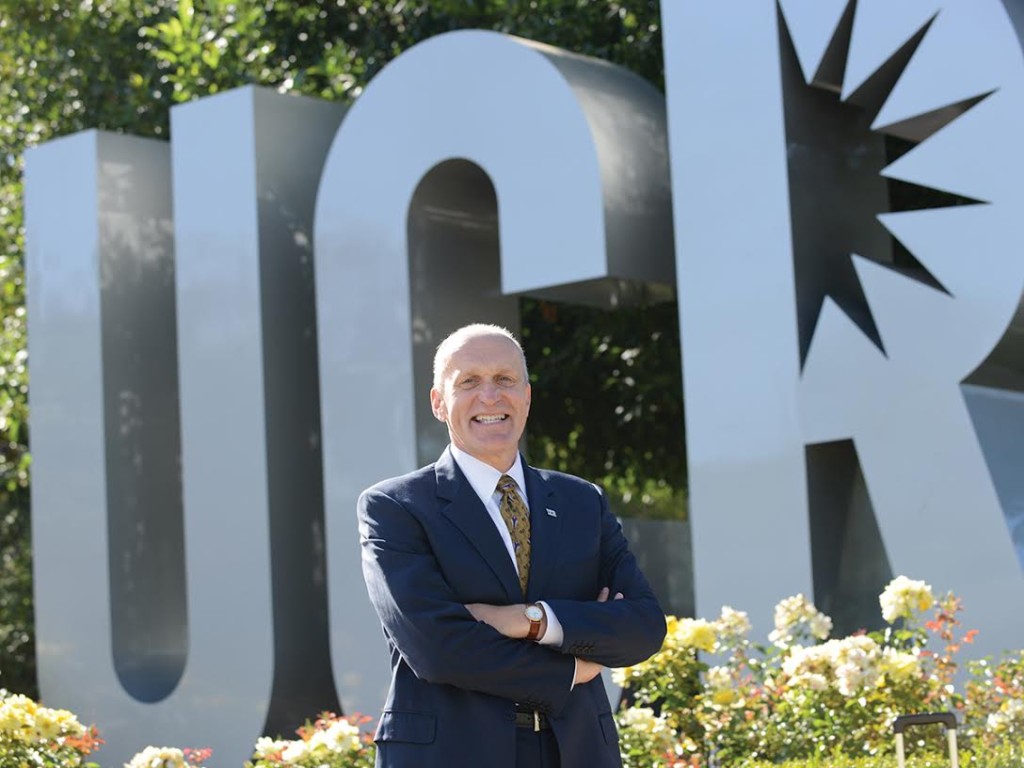
Since 2014, Chancellor Kim Wilcox’s Physical Master Plan has been in the works. Previous consultation workshops have been held at the HUB to gather student and faculty opinions for a study guided by the Santa Monica-based architecture firm Moore Ruble Yudell. Recently, at a town hall meeting on May 3, Wilcox revealed some specific concepts for the campus expansion — some concepts that do not seem to accommodate the needs of UCR students.
Although the master plan has yet to be finalized and will be released to the public at the end of the month, the current understanding of the plan’s expansion, from its focus on more aesthetical or profit-making facilities to its current plans for family housing, are perplexing — especially if these plans are meant to fall in line with UCR’s commitment to students’ education (or even UCR’s mission statement, which currently is not posted on the main website).
What role do an entertainment center and new basketball courts play into a UCR student’s education? Unless shooting hoops or having a possible indoor location for the next time HEAT is cancelled can help with upper-division classes, the fact that this proposed structure was the highlight of the plan is worrisome as there are still existing structures and an imbalanced student-to-faculty ratio that need fixing.
Take a step inside Watkins or Sproul halls toward the south side of campus or have a quick study sesh inside Rivera Library. These locations are in need of repairs ranging from better seating options or more space-maximizing seating arrangements. While it’s understandable that such facilities are old and renovations on them will be tricky, this should be a priority of the university if they’re still used for numerous classes and discussions on campus. A UCR student shouldn’t have to sit in a janky chair and focus on a professor writing on a chalkboard, while fanning themselves in a non-air conditioned room. And a student next to him shouldn’t have to sit on the floor fumbling with a notebook, because even all the janky chairs have been taken.
While the proposed two multidisciplinary research buildings indeed “encourage collaboration across the departments,” the lack of classroom space in these buildings do not contribute to solving the need for classroom space for current and future UCR students. Rather, these spaces are focused on aiding the university’s commitment to research, which is often where universities draw profits from.
The university has seen an increase in student population, with UCR accepting an additional 750 applicants as part of the UC-wide initiative to accept 6,500 more students than in 2015. While the master plan is long-term, it must not be forgotten that immediate actions must be made to meet the increased student population, such as hiring more faculty or offering more online classes.
As a university that doesn’t have a public image as renowned as its sister universities in terms of facilities, Wilcox’s focus on such is explainable and may convince prospective applicants to commit to UCR. But, can’t the same goal — of selling UCR to the public — be also done with a continued commitment to affordability or diversity, characteristics that many students seek when applying to universities?
Wilcox’s master plan strays from this, especially in consideration to UCR’s family housing — the proposed site of the new entertainment center. While the family housing is an area in dire need of renovation and therefore difficult and costly to maintain, the current lack of plans for additional family housing is limiting to students with families. Family housing offers many students affordable housing that is next to campus, an opportunity that can go a long way for many as they do not have to worry about commutes from home or living away from a family-based community.
However, as of last week during the ASUCR senate meeting, the housing committee announced plans for future families who need affordable housing. Hopefully, this continues to be the case as the master plan comes into fruition.
While we admire Wilcox’s ambition to expand UCR, we hope the prospective master plan puts more focus on the future of UCR student’s education than aiding public image. The UCs were made to benefit the public and how can it do so if plans like these stray away from this core mission?








